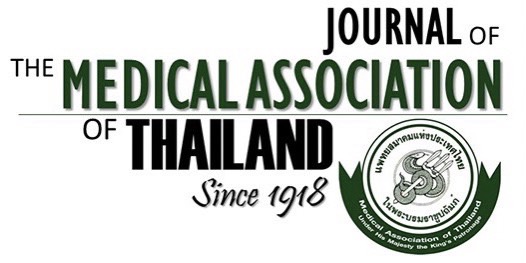Anesthesia-Related Cardiac Arrest in Children: The Thai Anesthesia Incidents Study (THAI Study)
Nutchanart Bunchungmongkol MD*, Yodying Punjasawadwong MD*, Saowapark Chumpathong MD**, Wanna Somboonviboon MD***, Suwannee Suraseranivongse MD**, Mayuree Vasinanukorn MD****, Surirat Srisawasdi MD*****, Somboon Thienthong MD******, Tharnthip Pranootnarabhal MD**
Affiliation : * Department of Anesthesiology, Faculty of Medicine, Chiang Mai University, Chiang Mai, Thailand ** Department of Anesthesiology, Faculty of Medicine Siriraj Hospital, Mahidol University, Bangkok, Thailand *** Department of Anesthesiology, Faculty of Medicine, Chulalongkorn University, Bangkok, Thailand **** Department of Anesthesiology, Faculty of Medicine, Prince of Songkla Univeristy, Songkhla, Thailand ***** Department of Anesthesiology, Faculty of Medicine, Ramathibodi Hospital, Mahidol University, Bangkok, Thailand ****** Department of Anesthesiology, Faculty of Medicine, Khon Kaen University, Khon Kaen, Thailand
Background and Objective : The Thai Anesthesia Incidents study (THAI Study) is the first national study of
anesthesia outcomes during anesthesia practice in Thailand. The authors extracted data of 25,098 pediatric
cases from the THAI Study in order to examine the incidence, suspected causes, contributory factors, and
suggested corrective strategies associated with anesthesia-related cardiac arrest.
Material and Method: A multi-centered prospective descriptive study was conducted among 20 hospitals
across Thailand over a year between March 1, 2003 and February 28, 2004. Data of cardiac arrests in
children aged 15 years and younger were collected during anesthesia, in the recovery room and 24 hours
postoperative period, and reviewed independently by at least two reviewers.
Results : Incidence of anesthesia- related cardiac arrest was 5.1 per 10,000 anesthetics, with 46% mortality
rate. Infants accounted for 61% of cases. Incidences of overall cardiac arrest and anesthesia-related arrest
were significantly higher in infants than older children and in children with ASA physical status 3-5 than
those with ASA physical status 1-2. Most of the anesthesia-related arrests occurred in the operating room
(61%) during induction or maintenance of anesthesia (84%). Respiratory-related cardiac arrest was the most
common suspected cause of anesthesia-related cardiac arrest. Improving supervision, additional training,
practice guidelines, efficient blood bank, equipment maintenance, and quality assurance monitoring are
suggested corrective strategies to improve the quality of care in pediatric anesthesia.
Conclusion : The incidence of anesthesia-related cardiac arrest was 5.1:10,000 anesthetics. Major risk
factors were children younger than 1 year of age and ASA 3-5. The identifications of airway management
and medication-related problems as the main causes of anesthesia-related cardiac arrest have important
implications for preventive strategies.
Keywords : Adolescent, Anesthesia, Child, Child preschool, Heart arrest



